New opportunities are emerging for the homewares, soft furnishing, interiors and upholstery sector as we reconsider the value of our living spaces. With an increase in the housing rental market, a shift in the way we work, and an overall increase in our disposable income (*in developed nations), there is a growing demand for products to aid in our everyday wellbeing and sharing of individual style - beyond that of fashion.
Fashion labels have been making a move towards separate homewares lines, not only to explore a different creative angle and reach new customers, yet also to examine the rate of production and connection with materials. Homewares has become the perfume of the 2020's, offering a way for consumers to buy into a brand while the designers can experiment with a variety of product categories.
As shoppers become aware of the harmful substances embedded within textiles and furnishing products, and of the waste involved with manufacture of such items, labels are stepping up to provide an alternative. Arguably, it is home products that have more longevity as they are kept for longer, however, as we spend more time in situ, interiors have become just as trend-driven. With "growing up" taking longer, the so-called Millennial group are now able to impart effort and investment into building an aspirational home that they can share with themselves, family and friends.
So, whether you have found a solution to an everyday problem and are starting out on a homewares journey, or are an established fashion brand looking to launch a separate interiors line, or even a soft furnishing brand looking to understand and subsequently implement more responsible practices, this is a holistic Masterclass that will offer answers.
In this Masterclass you will learn:
- The main environmental issues associated with homewares products: materials, printing, dyeing, end of life
- Key challenges and opportunities in launching a textiles-based homewares line onto a saturated market
- How to categorise your designs: homewares, soft furnishing, interior product, furniture, lifestyle
- Main regulations and materials testing you should be aware of and carry out
- What to know when approaching homewares stores with your products, along with key trends
- Advice on transitioning from a fashion brand to include a homewares range
- Considerations for identifying suitable fabrics, whether synthetic or natural, and insight into processing
- About printing, dyeing and surface pattern design for soft furnishings: digital, screen and biotech offerings
- Considerations for lifecycle, circular design principles, and using biomimicry to revolutionise your design
- Helpful guidance on sustainably dressing film and TV sets
- About traditional crafts and "waste" streams that you can utilise to create a niche product, and working with indigenous communities
- And business models that you can look to that will support ethical production and lifecycle
-
Eco-Friendly Screen Printing and Embroidery
with I Dress MyselfRead More...Summary
A bitesize 15 minute Lesson that address eco-friendly printing methods. I Dress Myself was established in 2006 in Nottingham UK, and moved over to eco-friendly water-based inks within the first year. They have expanded services to include digital garment printing for one-offs, small print runs and full-colour printing, along with eco embroidery that uses a GOTS-certified FSC viscose thread. They have a wealth of knowledge and expertise in the world of eco-friendly screen printing, and here we learn about considerations you should make when assessing the surface design of your textile products.
-
Biomimicry: How Can Nature Revolutionise Design
with Ehab SayedRead More...Summary
We talk to Ehab Sayed from Biohm - a research and development led company that places biological systems at the heart of its inspiration to create a healthy and more sustainable environment. Biohm creates bio-based materials, biomimetic construction systems, and undertake additional services and research. Ehab imparts knowledge on utilising waste and biomaterials to create a positive and circular product.
-
The Organic Sheepskin Tanning Process
with Mark RaymondRead More...Summary
This is an 18 minute lesson where we continue on with Mark Raymond, owner of Neville Farm and Organic Sheepskins, to understand how the organic tanning process differs to a conventional one, and what the benefits and drawbacks are either way. We look specifically at the steps taken to organically tan a raw sheepskin, the certifications that validate the organic claims (for the farm and for the process), and what the pricing structure is like for such a product. Mark also explains why his sheepskins are NOT suitable for fashion - or at least in their current form - with visual examples of sheepskins so that you can recognise the variety of possible applications for such a material.
This is part two of Mark's lessons, with the first one covering the UK sheepskin industry, and how regenerating land and working organically can positively impact the climate. Find Part One here.
**Please be aware that the video and key takeaways contain descriptions of processes within the leather and meat industries.**
-
Recognising Common Fabric Tests And Test Report Information
with Sarah BlackhamRead More...Summary
Product technologist Sarah Blackham takes us through a three-part session on fabric testing. In part three we learn to recognise the common fabric tests and their regulations and directives (see the next session for more on this), along with how to read and understand the common fabric test reports.
Thumbnail image: www.diversifiedtestinglabs.com
-
Working Respectfully With Indigenous Artisans
with Maud LerayerRead More...Summary
Founder of New York-based ethical homewares brand Behind The Hill, Maud Lerayer, joined us to impart wisdom from her experience working with indigenous communities in Guatemala and Mexico who produce the colour-grown cotton that the designer uses for her products.
Understanding your responsibility as a designer to respect those along your supply chain, and appreciating your role in being collaborative rather than extractive, are both imperative tools to equip yourself with no matter what your product. When working with any artisan (indigenous or not), it is essential to acknowledge that they are the business owners, the skilled ones, and without them your business would not work.
So how do you approach artisanal communities? How do you ensure that you design a product that will sell in order to educate on ancestral techniques and practices? What key considerations should be made when stepping out to build relationships with indigenous peoples?
Learn more in this 30-minute conversation.
-
Low Impact Materials That Conserve Resources And Heritage
with Rodrigo LopesRead More...Summary
In this Lesson, discover the incredible sustainable stories behind the production of fish leather, recycled cotton, and BeLEAF™, low-impact materials that are being brought to market by Global Green, a premium materials hub based in The Netherlands.
We chat to Director Rodrigo Lopes to find out how these materials support local economies, why they offer a far more sustainable alternative to others on the market and how their production succeeds in conserving both water and energy.
-
Implementing Circular Design Practices
with Aurélie FontanRead More...Summary
Designer, maker and biotech innovator Aurélie Fontan joins us to impart wisdom on how to implement circular design practices in your fashion business. Learn about what circularity looks like now for fashion, and speculatively what it could be in the future. Address considerations including materials, sourcing and manufacture, and if there should be special considerations depending on your product category.
Aurélie also introduces Mykkö, a lab-grown mycelium leather that supports local regenerative systems, and low impact slow production methods.
The guidance given here is practical and grounded in experience, so you can take it away already and implement it into your existing or startup business.
-
Top Tips For Running A Successful Lifestyle Brand
with Ruth LawrensonRead More...Summary
A bitesize 8 minute video from retail buying consultant Ruth Lawrenson that gives you five top tips on running a successful lifestyle brand. Ruth has a retail career spanning more than 20 years as a home interiors and seasonal buyer for high street department store House of Fraser and luxury brand Fortnum & Mason, along with running her own lifestyle brand that focussed on handmade fair trade Indonesian products. So gain tips in this Lesson on how to launch a homewares line as part of your fashion brand, or as a completely new lifestyle label.
-
Understanding Biodesign, Biomaterials and Biodegradability
with Cassie QuinnRead More...Summary
This 17 minute lesson helps you understand what biodesign, biomaterials and biodegradability mean, under the umbrella of regenerative textiles. Cassie Quinn is a designer, maker and researcher under self-founded consultancy and studio CQ Studio. Cassie joins us to impart wisdom and clear up some complex terminology that is frankly bandied about within all industries as a marketing point for sustainability. But how can you actually utilise biomaterials and biodesign for a product that is supposed to last many years, for instance shoes, accessories or soft furnishings? Or what and how should you design if you want your materials to biodegrade quickly, such as with certain fast fashion items?
This is an illuminating Lesson that will debunk terms, give practical guidance on using biomaterials, and raise awareness on how they fit into current (and future) systems.
-
Research And Development For Film And TV Sets And Costumes
with Arantza VilasRead More...Summary
This is a 23 minute lesson. Textile artist and designer Arantza Vilas, founder of Pinaki Studios, explains how to research textiles for modern film and TV. She introduces projects that explore our connection and familiarity with textiles that will build an authentic picture, while allowing for experimentation into innovative textile techniques and materials. Here we understand how the film and TV industry needs to both limit and utilise waste.
If you are wanting to create interior products or dress sets, tune into this Lesson for an understanding of where your responsible business practices and creativity could move this industry forward.
Thumbnail: Musketeers
-
Carbon Negative Furniture And Interiors
with Ardilla DeneysRead More...Summary
This is a bitesize 10 minute lesson from the founder and designer of Pollima, America's first CO2 negative furniture made from compressed agricultural waste hemp and soy fibre. Ardilla Deneys heads up this dreamy Lesson to help you understand business models and sustainable production methods for homewares, interiors and furniture that are helping to elevate this product area into the future.
Rather than just creating products, consider how you can utilise your ingenuity to reciprocate the gifted materials and resources of the Earth - whether through using a waste stream, ensuring customer engagement through rental and repair, or even supporting purchasing decisions with augmented reality.
Interviews
Francis Love: Launching A Bricks-And-Mortar Interiors Shop
Monday Jan 1st, 2018Changing Lives in Cheshire: Recycling Furniture for Social Good
Friday Nov 1st, 2019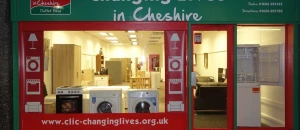
Coyuchi: Luxury Organic And Climate Beneficial Home Textiles
Saturday May 1st, 2021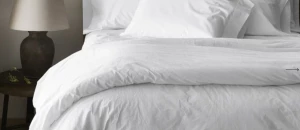
Technical Tutorials
Heritage Craft Practice: Oak Coppicing, Swilling and Weaving
Sunday Dec 1st, 2019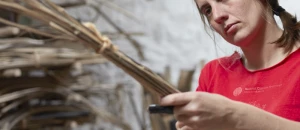
Technical Considerations For Natural Colour
Wednesday Dec 1st, 2021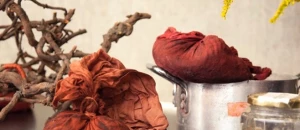
Technical Considerations For Surface Pattern Design
Wednesday Dec 1st, 2021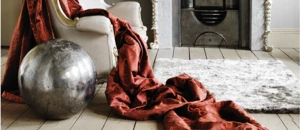
Homework:
Consider your business model: Is it circular? Do you work with waste streams? Are you focussed on local production? Will you offer a take back scheme?
Consider your materials: What positive solution do they offer? Are you sourcing deadstock? Is it utilisation of a waste stream? Will you plan for circularity?
Consider your customer: How will your audience use the product? What is the product's end of life?
Consider your production: Are you working with artisans? Is it batch production? How does your supply chain fit together?
Additional resources:
Reports
Global Homeware Market: Global Industry Analysis, Size, Trends, Growth, Trends, and Forecast 2019 - 2027 [Transparency Market Research]
Articles
Now interiors are the new black: fashion labels move into homeware design [The Guardian]
House style: why fashion retailers are moving into homeware [Drapers]
Guides
British Interior Textiles: Manufacturers and Brands [UKFT]
Follow on Masterclasses:
Additional Reading
Top Takeaways from The Regenerative Fashion Conference
Sunday Oct 1st, 2023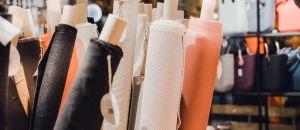
Building a Fashion Brand that is Successful, Profitable and Ethical
Friday May 6th, 20225 Sustainable YouTubers Every Environmentally Conscious Person Should Follow
Monday Feb 21st, 2022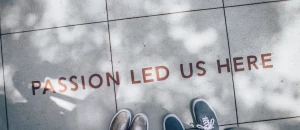
Top Sustainability Textile Trade Shows All Designers Should Visit
Monday Feb 14th, 2022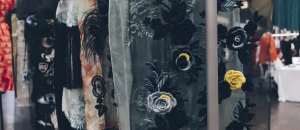
Why Sustainable Fashion Brands Are Taking On Eco Homewares
Monday Dec 20th, 2021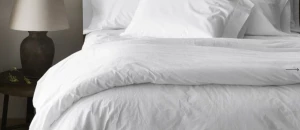
In Conversation With: Kate Anderson, Ecosophy
Tuesday Dec 14th, 2021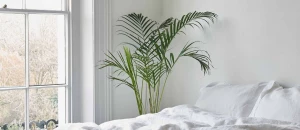
Why we should use reusable packaging - and inspiration to make your own
Friday Dec 10th, 2021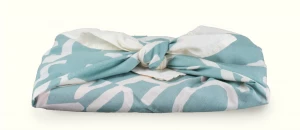
Fashion Trend Forecasting: Vision, Colour and Materials 2022
Monday Dec 6th, 2021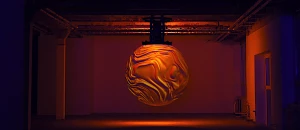
In Conversation With: Kat Vandal, Vandal Kids
Wednesday Nov 24th, 2021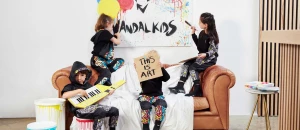
Why Sustainability In Wedding Fashion Is More Important Than Ever
Wednesday Nov 17th, 2021
